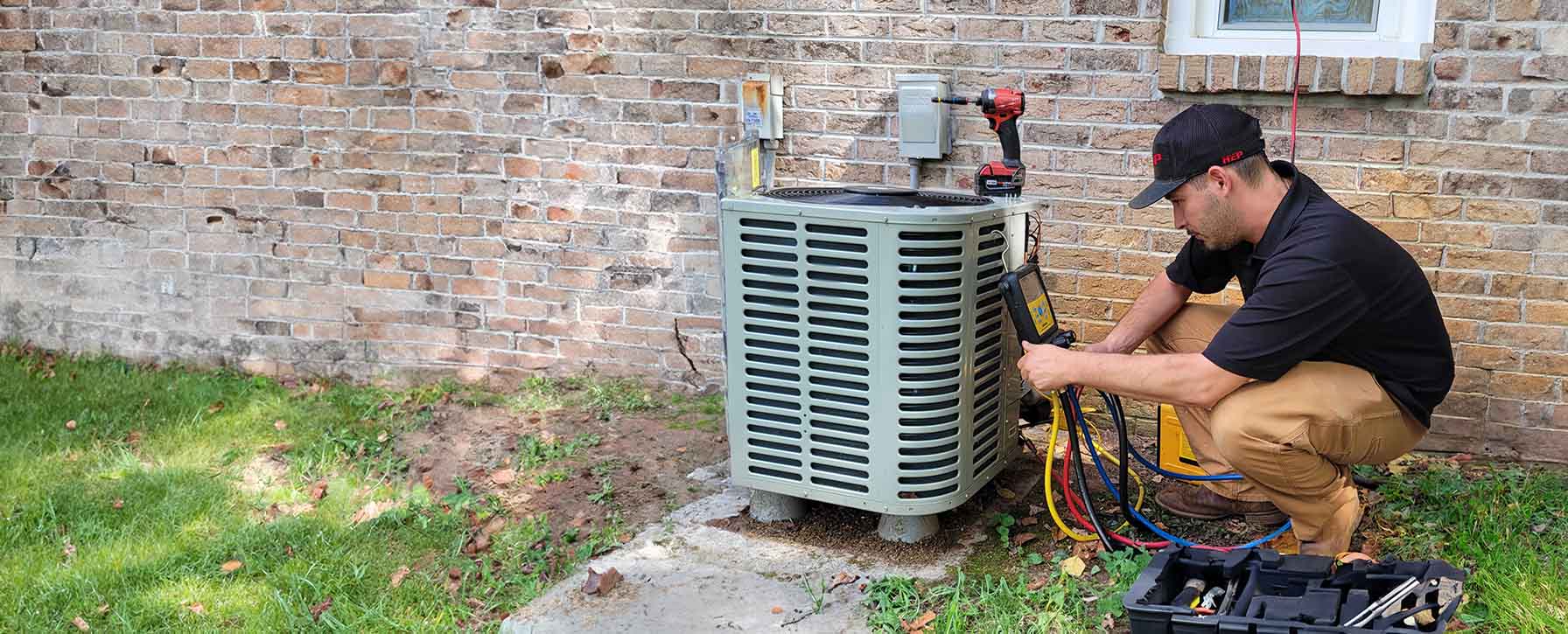

Year-round Comfort
Your trusted partner for professional home services. Quality workmanship, guaranteed satisfaction.




- HEP
- Year-round Comfort
Year-round Comfort | Ventilation and Air Quality | Heating and Air Conditioning | Allardt
From warm, humid summers to brisk plateau winters, Allardt homeowners trust HEP to keep every room feeling just right. Our certified technicians balance heating and cooling with intelligent airflow solutions, so your family enjoys steady temperatures without drafts, lingering odors, or aggravating allergens. Because we live and work in Fentress County too, we design systems that stand up to local humidity swings while helping you trim energy bills all year long.
Whether you’re renovating an older farmhouse or outfitting brand-new construction, HEP customizes ventilation and air quality upgrades that fit your lifestyle. From precision duct sealing and whole-home dehumidifiers to hospital-grade filtration and UV lights, we tackle the hidden particles you can’t see but definitely feel. Ready to breathe easier? Call or click today, and let HEP deliver the freshest comfort Allardt has ever known.
FAQs
Why is balanced ventilation so important for homes and businesses in Allardt?
Allardt sits in a humid subtropical climate zone, which means we experience warm, moist summers and occasional cold snaps in winter. Without controlled ventilation, excess humidity can build up in summer and stale, dry air can linger in winter. Balanced ventilation systems—such as energy-recovery ventilators (ERVs)—exhaust contaminated indoor air while bringing in a measured amount of filtered outdoor air, helping to remove odors, moisture, and airborne pollutants without wasting the conditioned air you pay to heat or cool.
How often should I replace or clean my HVAC air filters?
As a rule of thumb, standard 1-inch fiberglass filters should be replaced every 30–60 days. Pleated 2-inch or 4-inch high-efficiency filters can last up to 90 days, and media cabinet filters may last 6–12 months. However, homes with pets, smokers, or residents with allergies should check filters monthly. A clogged filter restricts airflow, reduces system efficiency, and allows dust and allergens to recirculate, so staying on schedule is one of the simplest ways to protect both indoor air quality and HVAC performance.
What are the signs that my indoor air quality needs professional attention?
Common red flags include persistent musty or chemical odors, visible dust accumulation around vents, frequent allergy or respiratory symptoms, inconsistent humidity (too damp in summer, too dry in winter), or mold growth on walls or window sills. High utility bills may also indicate insufficient ventilation or clogged filters. If you notice any of these issues, schedule an IAQ assessment to pinpoint the cause and recommend solutions such as duct cleaning, filtration upgrades, or humidity control.
Which add-on products improve air quality without compromising comfort?
All-in-one solutions include: (1) whole-house humidifiers and dehumidifiers to keep relative humidity in the ideal 30–50 % range; (2) UV-C germicidal lights installed in the air handler to neutralize mold spores, bacteria, and viruses; (3) high-MERV or HEPA filtration systems that trap ultrafine particles; and (4) ERV or HRV units that exchange stale indoor air with fresh outdoor air while transferring heat and moisture, maintaining comfort and energy efficiency year-round.
Can an Energy Recovery Ventilator actually lower my heating and cooling bills?
Yes. An ERV pre-conditions incoming outdoor air by transferring heat and moisture to—or from—the outgoing airstream, depending on the season. In summer, it removes heat and humidity from the incoming air, reducing the load on your air conditioner. In winter, it recovers heat and moisture, easing the demand on your furnace or heat pump. Studies show ERVs can cut ventilation-related energy costs by 30–50 %, especially in climates like Allardt's with pronounced seasonal humidity swings.
How often should I schedule professional HVAC maintenance for optimal year-round comfort?
Plan for two tune-ups each year: one in early spring for the cooling system and one in early fall for the heating system. During a maintenance visit, a certified technician will clean coils, check refrigerant charge, tighten electrical connections, calibrate thermostats, lubricate moving parts, and verify airflow and combustion safety. Regular servicing extends equipment life, maintains high efficiency, catches small problems before they escalate, and keeps your manufacturer warranty in force.